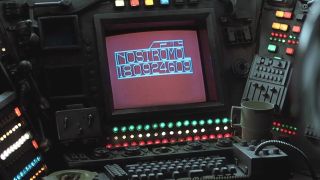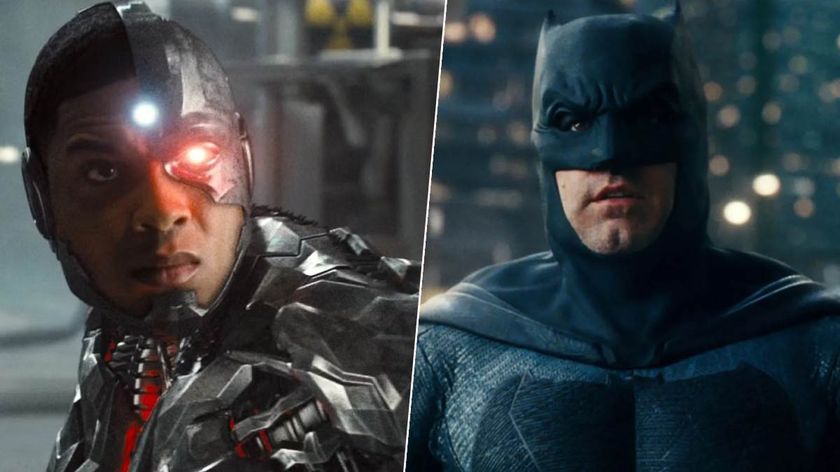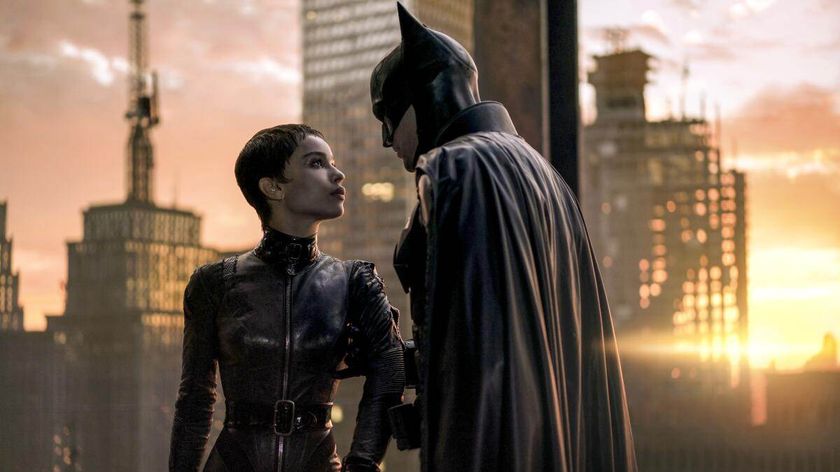"So physical they’re almost part of the crew" - the control panel buttons are The Best Bit in Alien

I am absolutely the worst person to have around if there’s an ominous big red button nearby, because I will slam my hand down upon it without a second thought. So you can imagine my delight when I watch Alien and see all those beautiful panels with enough buttons to keep me entertained for hours, jabbing them with palm and finger like a demented toddler as I leap into trying to figure out what they do. Alien’s buttons fascinate me because they’re so physical they’re almost part of the crew. Plus they’re in such sharp contrast to the mysterious and efficiently-designed Xenomorph, as the Nostromo is full of old-school technology which requires a firm hand and a certain knowledge of what each thing does before you start pressing buttons.

The buttons are irresistible, tantalising props which beg to be pressed. They’re a far cry from the sleek, touchscreen tech we’re used to at the moment. Instead the control panels in the Nostromo are lumpy, with each mechanism having its own tangible function. This only serves to emphasise the role each character plays when it comes to shaking the Nostromo back into life: this ship won’t operate automatically, and the sheer amount of buttons to press indicate that the crew are in control. With the elegant ship from Prometheus, all white and spotless, it was easy to believe that it could get along perfectly fine without its crew. Not so in Alien. As the ship awakens following the crew’s sudden jolt out of hypersleep, the technology seems to yawn and stretch along with them. Screens run through binary coding like they’re shaking off sleep, around them buttons ignite with bright colours: turquoise, stark white, canary yellow. Sauntering around the control panels, Ripley is so efficient, so certain of what each key, dial, and tuner does. Clicks and thuds echo around the flight deck as she casually stabs the switches while she strolls by, the systems gradually blinking into life. These aren’t any sensitive buttons either - you’ve got to jab them to get them to work, making that ‘clunk’ noise as they sink inwards even more satisfying.

However, not all of the technology in Alien is so transparent as that initial booting-up stage. The control room with the AI MU/TH/UR in it is enigmatic and almost artistic, as the blinking lights which fill it don’t have any labels so god knows what they do exactly. A callback to our basic human fascination with fire and keeping the dark at bay, I can’t (and most certainly won’t) deny the satisfaction which courses through my veins when I see buttons light up after being pressed. Consequently, I adore the sequence when Captain Dallas approaches MU/TH/UR. On an unassuming panel on the wall yellow, orange and red squares illuminate his palm, acquiescing under his thumb. Miraculously, once they’re all aligned, a small door springs open, bouncing on its hinges. Such a simple process, yet it’s beyond pleasing to see that these buttons work. But wait - it gets better because MU/TH/UR’s control room, with its cream walls and small, tightly fitted screens, is my happy place. I don’t know if the buttons on the keyboard control the galaxy of lights above Dallas’ head, but as long as the lights continue to pulse and the keyboard retains its bulky, hefty keys, I don’t care. Despite the fact that Dallas navigates the keyboard confidently, the lack of letters on each key (instead there are symbols) mean that I have some idea of the complicated machinery at work. Dallas doesn’t type out his questions in full, so each one must work as some kind of streamlined language. Bearing this in mind, when it gets to the stage where the crew are trying to evade the Alien rapidly killing them off, the mystery of the symbols littering the keys in the control room make me dubious about anyone’s capability to control MU/TH/UR, the brain of the ship.

My sudden feelings of panic for Ripley are rapidly exacerbated after seeing her tackle MU/TH/UR’s odd keyboard. Irritable beeping clusters around Ripley as she brings up the self-destruct sequence, her sweating hands shining over the light of the flat, rectangular buttons hidden underneath the system hatch. For a button connoisseur like myself, these ones are of a different class. The cryptic symbols and words printed upon them mean that, (as if being chased by a blood-thirsty Alien wasn’t enough), Ripley now has to work out which buttons to press. The complicated sequence makes me feel like the Nostromo is now against her as well by making the method of getting the ship to explode convoluted, and MU/TH/UR’s refusal to cooperate when Ripley tries to shut down the self-destruct sequence only confirms my fears. As if to support my suspicion about the sudden reluctance of the Nostromo to comply with its one remaining crew member, the shallow buttons aren’t as pliable as the ones in the cream, light-filled hub, and with each jab of Ripley’s finger the whole keyboard dips. Although it may not be a particular feat of craftsmanship when it comes to the prop or the fictional Nostromo itself, its unwieldy, clumsy shudders as Ripley taps in the self-destruct sequence shows that the ship isn’t sleek or elegant, but the words written on each button (from 'Agaric Fly' to 'Pranic Lift 777') mean that the Nostromo is suddenly as foreign as an iPhone, which if I didn’t know better, I’d think was a piece of enigmatic alien technology considering its lustrous design.

After Ripley types in the correct sequence, she uses smooth metal handles to pull up four gleaming cylinders. No obvious buttons here; instead she effortlessly slides a cross-section outwards to reveal a crimson button hiding inside like a shining jewel. Okay, I might be going a bit over the top here, but the sight of that bright red light against the shining metal makes my fingers itch to press it. At the root of it, these buttons get the Nostromo to work in a very palpable way. No touchscreens here - no graceful swipes to bring an engine online, no voice-activated commands. And boy, when the characters get it right, these buttons send me into rhapsodies as screens flicker into life, MU/TH/UR answers questions, and doors haul themselves open.
The Best Bit focuses on the special moments, scenes, and details of movies and TV that make them worth watching. It arrives every Wednesday at 0900 PST / 1700 GMT. Follow @12DOVE on Twitter for updates.
Sign up to the SFX Newsletter
Get sneak previews, exclusive competitions and details of special events each month!
While here at GamesRadar, Zoe was a features writer and video presenter for us. She's since flown the coop and gone on to work at Eurogamer where she's a video producer, and also runs her own Twitch and YouTube channels. She specialises in huge open-world games, true crime, and lore deep-dives.

















